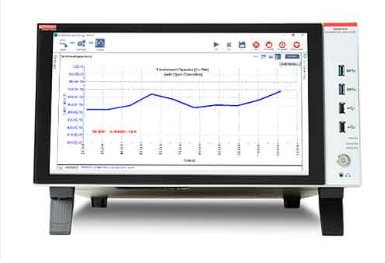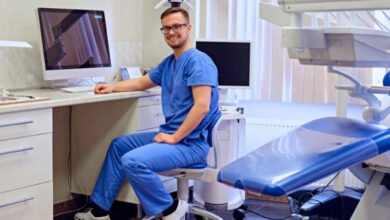Multi-Parameter Simulators vs. Single-Function Devices — Which Should You Choose?

Introduction
For biomedical engineers, simulators are essential tools. They verify that patient monitors, vital signs devices, and other critical hospital systems are operating correctly. Without them, preventive maintenance (PM) schedules grind to a halt, compliance risks skyrocket, and patient safety is put in jeopardy.
When it comes to simulators, hospitals face a key decision: invest in multi-parameter devices that combine multiple functions in one unit, or rely on single-function devices designed for specific tasks. Each option has advantages and drawbacks. The right choice depends on the hospital’s size, workflow, budget, and training environment.
In this blog, we’ll break down the pros and cons of both approaches, highlight real-world use cases, and explain how modern tools like the Pronk Technologies SimSlim® Multi-Parameter Simulator and the Pronk Technologies EasySim® Clinical Educator Simulator can help biomedical teams work more efficiently.
What Are Single-Function Devices?
Single-function simulators are designed to perform one specific task. For example:
- An ECG simulator for testing electrocardiogram functions.
- An NIBP simulator for checking non-invasive blood pressure monitors.
- An SpO₂ simulator for validating oxygen saturation accuracy.
Advantages of single-function devices:
- Simplicity: Easy to learn and operate.
- Focus: Highly specialized for one parameter.
- Lower upfront cost: Useful for small clinics that only need limited testing.
Drawbacks:
- Carrying multiple devices is inconvenient.
- Switching between simulators slows down PM cycles.
- Higher long-term costs if hospitals must purchase multiple units.
What Are Multi-Parameter Devices?
Multi-parameter simulators combine multiple testing capabilities into one compact device. Instead of carrying several simulators, engineers can test ECG, IBP, respiration, temperature, and more with a single tool.
Advantages of multi-parameter devices:
- Portability: One device replaces several, reducing weight and clutter.
- Efficiency: Faster PM cycles with fewer setup changes.
- Cost savings over time: One purchase covers multiple needs.
- Versatility: Suitable for both field use and training environments.
Drawbacks:
- Higher upfront cost compared to single-function tools.
- More complex features may require additional training.
Spotlight on SimSlim®
The Pronk Technologies SimSlim® Multi-Parameter Simulator exemplifies the benefits of multi-parameter design. About the size of a smartphone, it combines:
- ECG and arrhythmia simulation.
- Respiration signals.
- Invasive blood pressure (IBP).
- Cardiac output.
- Temperature testing.
Despite its compact size, SimSlim® is rugged, portable, and designed for daily field use. Engineers can slip it into a pocket, test multiple parameters in minutes, and reduce downtime across departments.
Spotlight on EasySim® for Educators
The Pronk Technologies EasySim® Clinical Educator Simulator takes the multi-parameter approach to the classroom. Built for training environments, EasySim® enables instructors to replicate real-world patient conditions without expensive mannequins.
Key features include:
- Multi-parameter simulation (ECG, IBP, respiration, temperature).
- Realistic LV-to-Ao pullback waveform scenarios.
- Portable design for flexible classroom setups.
This versatility prepares students for the actual tools they’ll use in hospitals, bridging the gap between theory and practice.
Case Example: Small Clinic vs. Large Hospital
Small Clinic Scenario:
A rural clinic with limited equipment needs chose single-function devices for NIBP and ECG. Since they only tested a handful of monitors monthly, single-function devices were cost-effective.
Large Hospital Scenario:
A 600-bed hospital required hundreds of PM checks per month across multiple departments. Engineers carrying four or five separate simulators slowed down workflow. Switching to SimSlim® streamlined operations, saving hundreds of labor hours annually.
Cost Comparison
At first glance, multi-parameter simulators cost more upfront. However, when considering total cost of ownership, they often deliver greater savings.
- Single-function approach: Purchasing an ECG simulator ($1,500), NIBP simulator ($1,200), IBP simulator ($2,000), and temperature simulator ($800) can add up quickly.
- Multi-parameter approach: A single device covering all these functions may cost less overall, while also saving space and time.
The Training Advantage
Training programs benefit most from multi-parameter simulators. Instead of investing in multiple units or expensive mannequins, schools can use EasySim® to provide hands-on practice for students. By rotating through scenarios, students gain experience with multiple clinical conditions in a fraction of the time.
Future Trends in Simulation
The choice between single-function and multi-parameter devices is evolving. Looking ahead, simulators will likely:
- Incorporate wireless reporting to eliminate paper logs.
- Integrate with hospital networks for centralized data storage.
- Become even smaller and more rugged while retaining accuracy.
These advances will make multi-parameter devices even more attractive for busy hospitals.
FAQ
Q: Are multi-parameter simulators as accurate as specialized devices?
A: Yes. Devices like SimSlim® meet IEC standards for accuracy across all included parameters.
Q: Do hospitals still need single-function simulators?
A: Sometimes. Smaller clinics or highly specialized labs may find single-function tools sufficient.
Q: Which is better for training environments?
A: Multi-parameter simulators like EasySim® provide more comprehensive scenarios for students.
Conclusion
The choice between multi-parameter and single-function simulators depends on context. Smaller clinics may value the simplicity and lower cost of single-function devices. Larger hospitals and training programs, however, benefit from the portability, efficiency, and versatility of multi-parameter simulators.
Tools like the Pronk Technologies SimSlim® Multi-Parameter Simulator and the Pronk Technologies EasySim® Clinical Educator Simulator demonstrate how consolidating multiple parameters into one rugged, portable device delivers real-world savings in time, cost, and efficiency.
For most hospitals, the answer is clear: multi-parameter simulators represent the future of biomedical testing.





